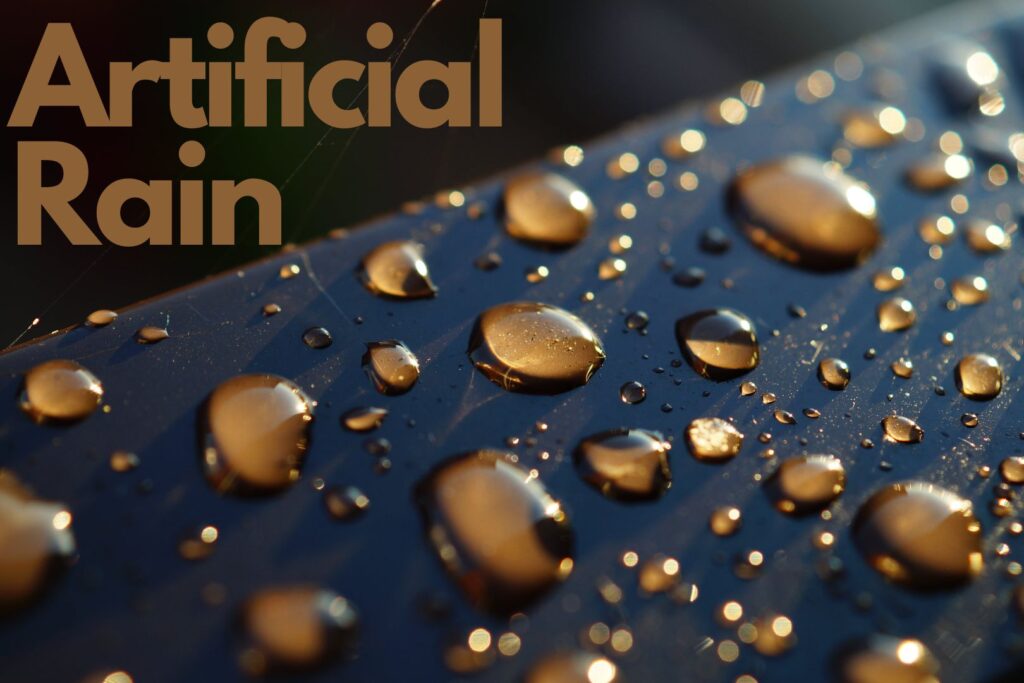Smog, a thick blanket of grime that suffocates cities worldwide, is a growing threat to our health and well-being. While traditional solutions like emission controls and awareness campaigns are vital, they often fall short. But a surprising contender has emerged in the fight for cleaner air: Artificial Rain.
What is Artificial Rain?
Forget Hollywood-style storms invented by scientists. Artificial rain, or cloud seeding, is a more delicate dance. Moreover, It involves sprinkling tiny particles, like silver iodide or salt, into clouds. These act as “condensation seeds,” attracting water vapor and encouraging raindrop formation.
How Can Artificial Rain Help?
Heavy rain acts like nature’s air purifier, washing away pollutants like dust, harmful particles, and even some gases. Then, cloud seeding aims to replicate this cleansing effect, potentially improving air quality within hours.
Pros & Cons of Artificial Rain for Smog:
Pros:
- Quick & Effective: Rain can significantly reduce pollution levels in a short window.
- Targeted Approach: Cloud seeding can focus on specific smog-choked areas.
- Relatively Cost-Effective: Compared to other solutions, it’s a budget-friendly option.
Cons:
- Limited Effectiveness: Cloud seeding requires specific weather conditions to work well, and its success varies across regions and seasons.
- Unintended Consequences: Forcing rain in unprepared areas could lead to flooding and other environmental disruptions.
- Ethical Concerns: Tampering with weather patterns raises questions about potential long-term effects and resource manipulation.
The Road Ahead:
While artificial rain holds promise, it’s not a magic fix. More research is needed to understand its long-term impact and potential drawbacks. Additionally, cloud seeding should be considered alongside emission reduction efforts and public awareness campaigns for a comprehensive air quality strategy.
The Bottom Line:
Artificial rain offers a glimpse of a cleaner future, but it’s crucial to approach it cautiously and responsibly. We must ensure our quest for cleaner air doesn’t create unintended consequences or worsen existing inequalities. Moreover, tackling smog requires a multi-pronged approach that addresses the root causes and embraces sustainable solutions. Only then can we truly breathe easy and create a healthier future for all.
Further, you may remain in touch by exploring www.tahhirs.com
